Dryland Training: Helpful Exercises For Race Preparation
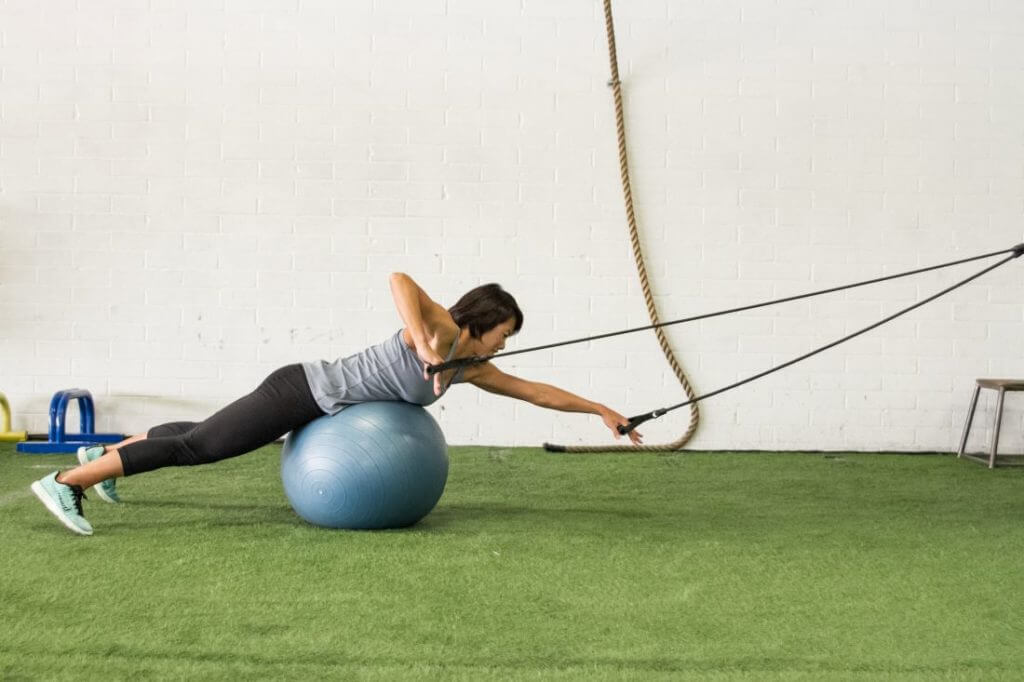
Dryland Training: Helpful Exercises For Race Preparation
By J.R. Rosania
In many parts of the country, clubs are preparing their swimmers to race. In the Southwest, where I’m from, swimmers are preparing the next several weeks for state, sectional and national-level competitions. In this month’s article, we will look at several exercises that will help swimmers prepare to perform at their peak level of ability. Included in the program are explosive- and speed-oriented movements. The focus is on starts, turns and stroke rate.
Ideally, these exercises will increase the swimmers’ strength and, along with a taper, bring out their speed and efficiency.
This race preparation program should begin four to six weeks prior to a taper meet. Perform three sets of eight to 10 repetitions with a weight that can be moved with speed.
Exercises demonstrated by Noriko Inada
Photos by Emmi Brytowski
STABILITY BALL TUBE – STROKE: FREESTYLE
Lying face down on a stability ball and using rubber stretch cords, perform a freestyle stroke.
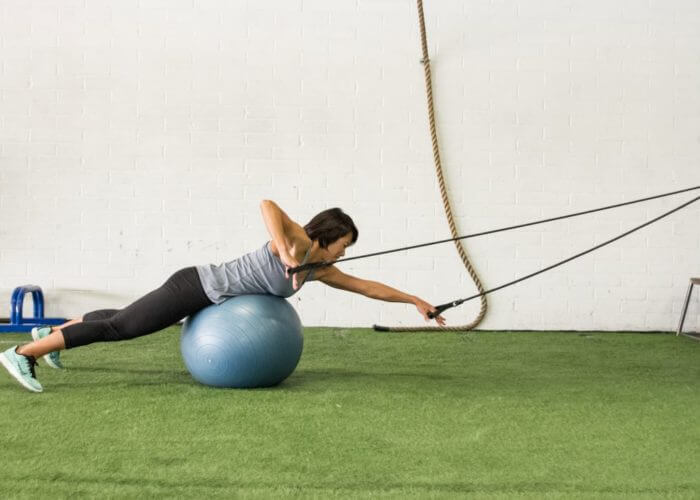
Photo Courtesy: Emmi Brytowski
STABILITY BALL TUBE – STROKE: BACKSTROKE
Lying supine with a stability ball between your shoulder blades, perform backstroke.
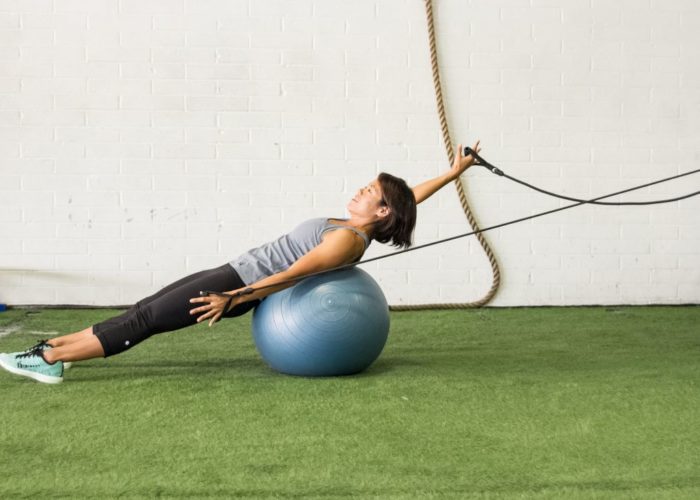
Photo Courtesy: Emmi Brytowski
BENT-OVER ALTERNATING DUMBBELL ROW
With a dumbbell in each hand, bend at the waist to 90 degrees, parallel with the floor, and perform a rowing movement.
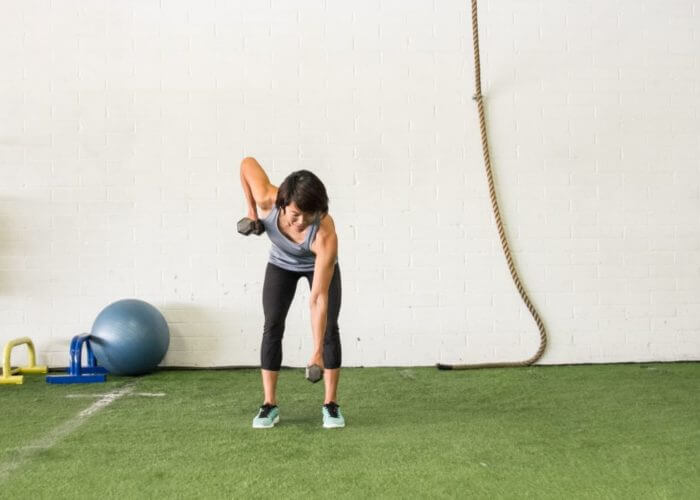
Photo Courtesy: Emmi Brytowski
DUMBBELL SQUAT JUMP INTO STREAMLINE
With a dumbbell in each hand, drop into a squat, and then jump vertically into a streamline.
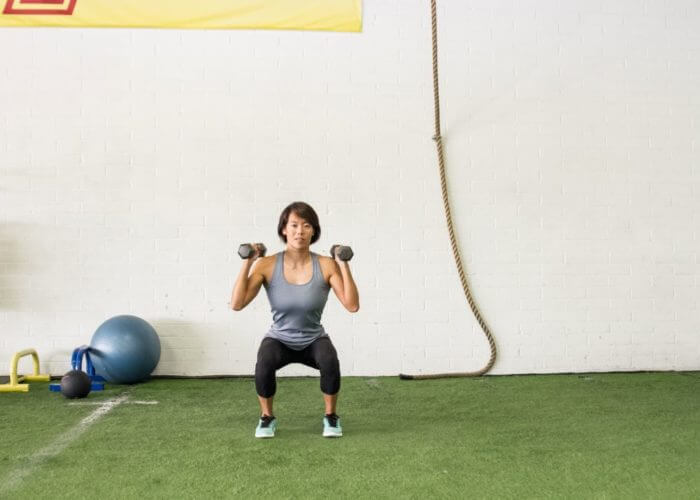
Photo Courtesy: Emmi Brytowski
BOX JUMP
Standing in front of a box or platform, squat to a 90-degree knee angle, and then jump onto the top of the box or platform.
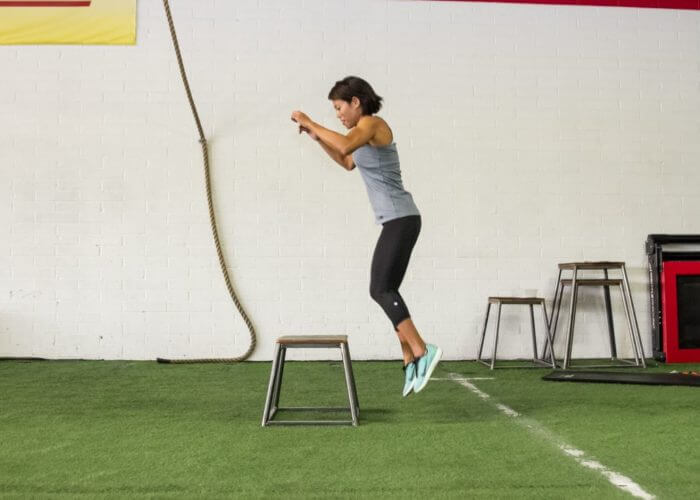
Photo Courtesy: Emmi Brytowski
MEET THE TRAINER
J.R. Rosania, B.S., exercise science, is one of the nation’s top performance enhancement coaches. He is the owner and CEO of Healthplex, LLC, in Phoenix. Check out Rosania’s website at www.jrhealthplex.net.
MEET THE ATHLETE
Noriko Inada, 44, swam for Japan at the 1992, 2000 and 2004 Olympics. She now swims Masters for Phoenix Swim Club, and owns Masters world records in the women’s 25-29, 30-34, 35-39 and 40-44 age groups.
NOTICE: All swimming and dryland training and instruction should be performed under the supervision of a qualified coach or instructor, and in circumstances that ensure the safety of participants.



